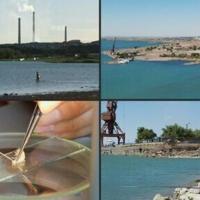When viewed from above, Lake Balkhash, with its turquoise waters extending into the desert in a crescent shape, earns its reputation as the “pearl of Kazakhstan.”
However, this unique body of water is under threat from pollution, climate change, and excessive use.
Lake Balkhash, the largest lake in Central Asia after the Caspian Sea, features both saltwater and freshwater sections, creating a diverse ecosystem that is now endangered.
A local fisherman, Alexei Grebennikov, expressed his concerns about the declining fish population and silting of the lake from his boat on the northern shores.
Scientists like Olga Sharipova are studying these changes, highlighting the impact of water level fluctuations on fish reproduction.
Despite recent respite from floods that replenished the lake, the long-term trend is worrisome due to the diminishing flow of the Ili River from China.
Central Asia’s other great lakes, including the Aral Sea and Lake Issyk-Kul, face similar challenges exacerbated by climate change and human activities.
The decline of Lake Balkhash has been linked to China’s overuse of the Ili River for agriculture, posing a threat to the region’s water supply.
Efforts to address pollution and reduce environmental impact are ongoing, with industries like Kazakhstan’s largest copper producer, Kazakhmys, facing scrutiny for their role in contaminating the lake.
While concerns about water sharing agreements with China persist, the imperative remains to preserve Lake Balkhash as a vital ecosystem.





